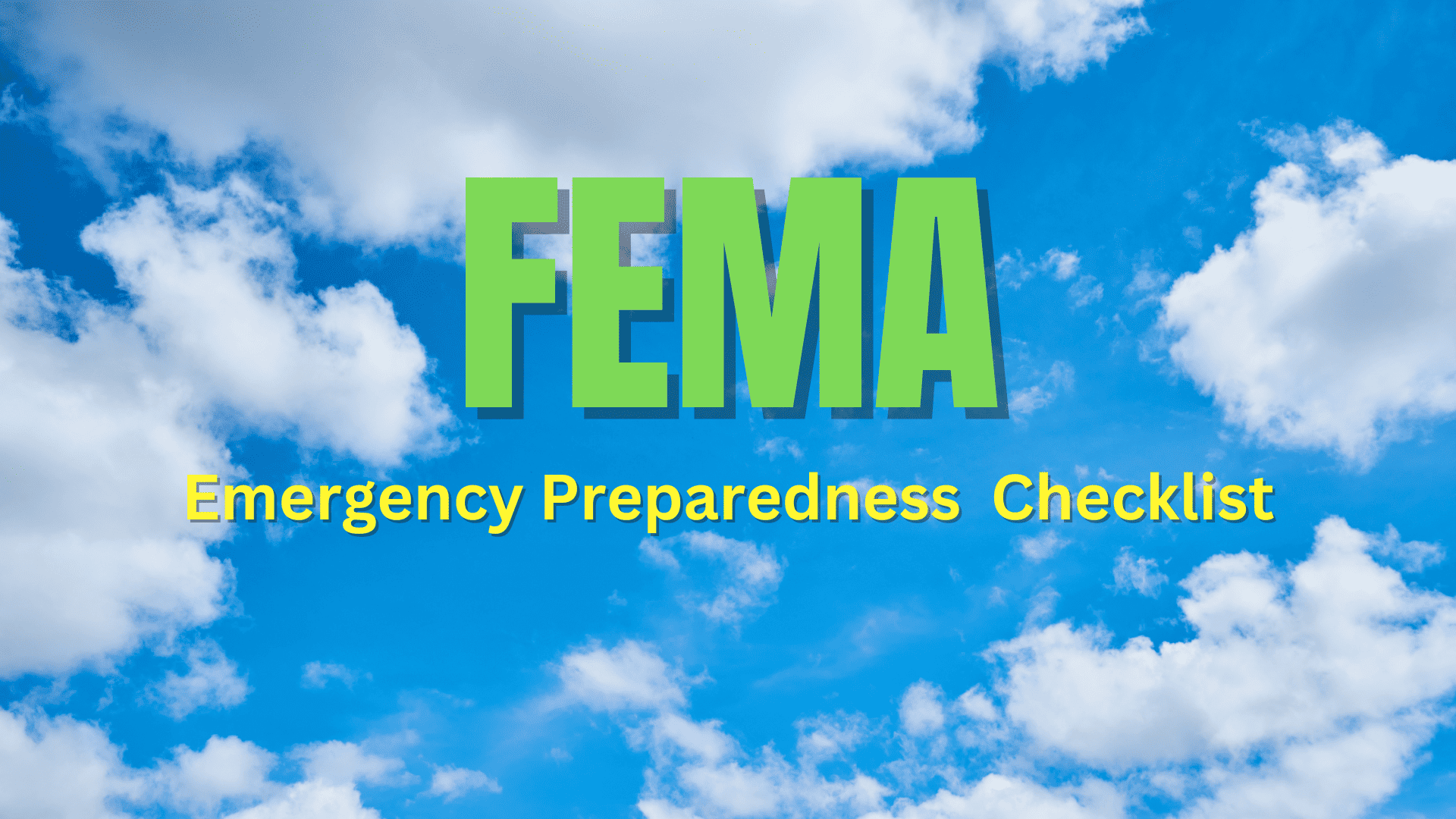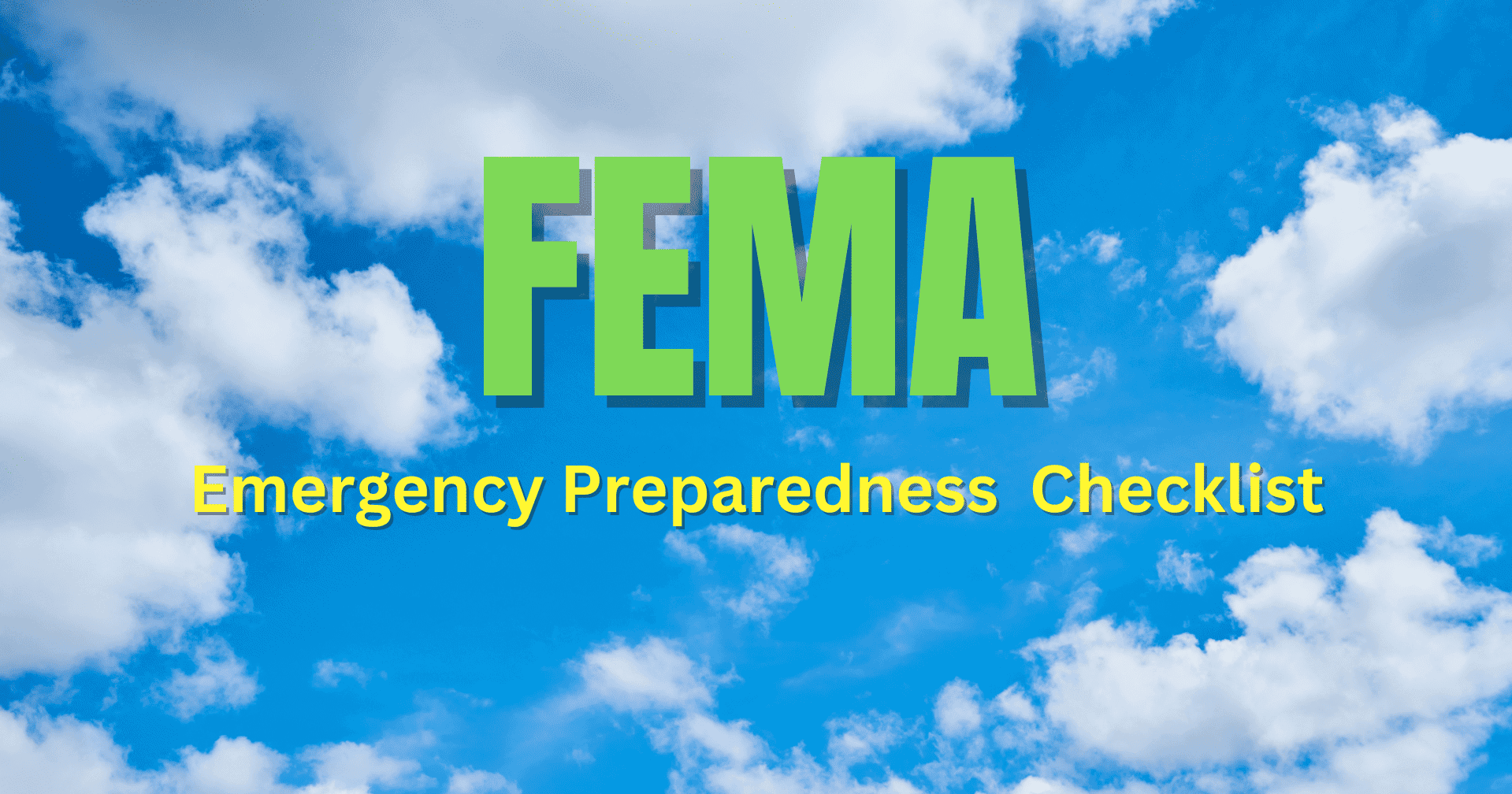Be Ready for Anything

Get prepared for emergencies with the FEMA Emergency Preparedness Checklist. This comprehensive guide provides step-by-step instructions to ensure your safety and well-being in the face of unexpected events. From essential supplies to communication strategies, this checklist covers it all.
Introduction: Taking Charge of Your Safety
Welcome to the ultimate guide on emergency preparedness! In this article, we will explore the FEMA Emergency Preparedness Checklist and equip you with the knowledge and resources needed to be ready for any situation. Emergencies can strike without warning, but by taking proactive measures, you can protect yourself, your loved ones, and your community.
[FEMA Emergency Preparedness Checklist]
When it comes to emergencies, preparation is key. The FEMA Emergency Preparedness Checklist is a comprehensive tool designed to help individuals and families make thorough preparations in advance. By following this checklist, you can ensure that you have everything you need to weather any storm, figuratively and literally. Let’s delve into the details of this indispensable guide.
Gathering Emergency Supplies

- Water: Stock up on at least one gallon of water per person per day for a minimum of three days. Don’t forget to include water for pets!
- Food: Aim for a three-day supply of non-perishable items that require no cooking or refrigeration. Include a manual can opener, as well as pet food if needed.
- Medications and First Aid: Assemble a seven-day supply of essential medications and a comprehensive first aid kit. Ensure you have extra prescription glasses, medical supplies, and any necessary documents.
- Light and Communication: Pack flashlights, extra batteries, a battery-powered or hand-crank radio, and a portable charger for your cell phone.
- Personal Hygiene: Include hygiene products such as toilet paper, wet wipes, hand sanitizer, and menstrual supplies.

- Tools and Safety: Have a basic toolkit, duct tape, a whistle, matches in a waterproof container, and a fire extinguisher.
Being prepared also means having a plan in place for communication during emergencies. The checklist provides guidance on creating a communication plan to ensure that you can stay connected with your loved ones and receive important updates.
Creating a Communication Plan
- Emergency Contacts: Compile a list of emergency contacts, including family members, friends, and local authorities. Share this information with all household members.
- Meeting Points: Establish designated meeting points both within your neighborhood and outside your area, in case you are separated during an emergency.
- Emergency Alerts: Familiarize yourself with local emergency alert systems and sign up for notifications. Many areas offer text message alerts or smartphone apps.
- Out-of-Area Contact: Designate a relative or friend who lives outside your area as a central point of contact. This person can relay messages if local communication is disrupted.
Your home is your sanctuary, and it’s crucial to take steps to safeguard it against potential hazards. The checklist provides guidance on how to protect your home and minimize risks.
Safeguarding Your Home

- Home Insurance: Review your homeowner’s or renter’s insurance policy to ensure it adequately covers potential damages caused by disasters.
- Home Maintenance: Regularly inspect your home for any structural vulnerabilities and address them promptly. Secure heavy furniture and appliances to prevent injuries during earthquakes or severe weather.
- Fire Safety: Install smoke detectors on every level of your home, test them monthly, and replace batteries annually. Develop and practice a fire escape plan with your family.
- Utility Shut-Offs: Locate and learn how to shut off utilities, such as gas, water, and electricity. Keep the necessary tools near the shut-off points.
- Home Inventory: Document your belongings and store important documents, such as passports and insurance policies, in a secure location or online storage.
Staying informed is vital during emergencies. The checklist emphasizes the importance of staying updated on the latest information and utilizing available resources.
Staying Informed

- Local Hazards: Research the potential hazards in your area, such as floods, hurricanes, or earthquakes. Understand how these events can affect you and the necessary precautions.
- News and Updates: Stay tuned to local news, weather forecasts, and official channels for real-time updates and instructions during emergencies.
- Community Resources: Familiarize yourself with community resources available during emergencies, such as shelters, evacuation routes, and emergency services.
FAQs
Now, let’s address some frequently asked questions regarding emergency preparedness and the FEMA Emergency Preparedness Checklist.
Q: How often should I update my emergency supplies?
It’s recommended to review and update your emergency supplies at least once a year. Check expiration dates, replenish any used items, and ensure your information is up to date.
Q: Should I create separate emergency kits for my car and workplace?
Absolutely! It’s crucial to have emergency kits in your car and workplace. Tailor them to the specific needs of each environment and consider including items like spare clothes, walking shoes, and snacks.
Q: Can I rely solely on my cell phone for communication during emergencies?
While cell phones are useful, they may not always be reliable during emergencies. Power outages or network disruptions can hinder communication. It’s essential to have alternative means, such as a battery-powered or hand-crank radio.
Q: How can I ensure my pets are prepared for emergencies?
Include your pets in your emergency plans. Prepare a pet emergency kit with food, water, medication, vaccination records, and comfort items. Research pet-friendly shelters or boarding facilities in advance.
Q: Are there any special considerations for individuals with disabilities or medical conditions?
Absolutely. Individuals with disabilities or medical conditions should tailor their emergency plans and supplies to their specific needs. Consider mobility aids, assistive devices, extra medication, and communication tools.
Q: What should I do if I need to evacuate my home?
If instructed to evacuate, follow the guidance of local authorities. Take your emergency kit, important documents, and necessary medications. Secure your home as best you can before leaving, and follow designated evacuation routes.
Conclusion: Ready for Anything
By following the FEMA Emergency Preparedness Checklist, you are taking a significant step toward safeguarding yourself and your loved ones during emergencies. Remember, preparation is the key to resilience. Take the time to gather supplies, create a communication plan, safeguard your home, and stay informed. By being ready for anything, you can face emergencies with confidence, knowing that you have taken proactive measures to protect what matters most.

